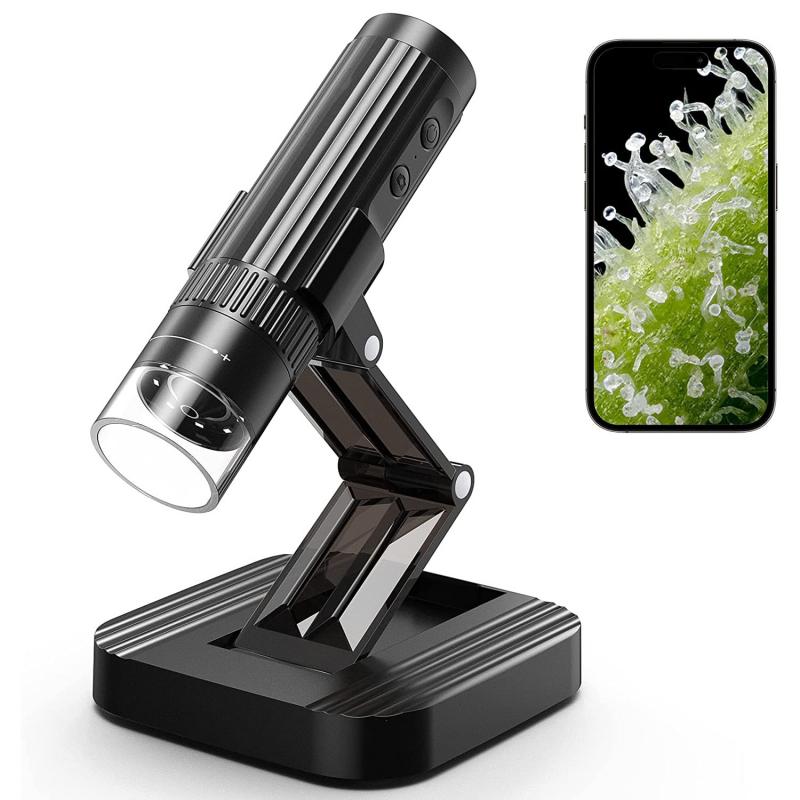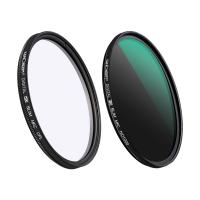What Do You Put Under A Microscope ?
Under a microscope, you can observe a wide range of specimens, including cells, tissues, microorganisms, minerals, crystals, and various biological samples.
1、 Microorganisms and Bacteria
What do you put under a microscope? Microorganisms and bacteria are commonly observed under a microscope. These microscopic organisms play a crucial role in various fields, including medicine, biology, and environmental science. Microorganisms refer to a diverse group of living organisms that are too small to be seen with the naked eye. They include bacteria, fungi, viruses, protozoa, and algae.
Microscopes allow scientists to study the structure, behavior, and interactions of microorganisms. By magnifying these tiny organisms, researchers can gain insights into their morphology, cellular processes, and genetic makeup. This knowledge is essential for understanding disease-causing pathogens, developing new antibiotics, and exploring the potential of microorganisms in biotechnology.
In recent years, advancements in microscopy techniques have revolutionized our understanding of microorganisms. For example, super-resolution microscopy techniques, such as stimulated emission depletion (STED) microscopy and structured illumination microscopy (SIM), have enabled scientists to visualize cellular structures and processes at a resolution beyond the diffraction limit of light. This has provided unprecedented insights into the intricate details of microorganisms, allowing researchers to study their behavior and interactions in greater detail.
Furthermore, the development of fluorescence microscopy has allowed scientists to label specific molecules within microorganisms, making it easier to track their movement and study their functions. Fluorescent probes and dyes can be used to label specific proteins, DNA, or other cellular components, enabling researchers to observe dynamic processes within microorganisms in real-time.
Microorganisms and bacteria are also studied under the microscope to understand their role in environmental processes. For instance, researchers examine microbial communities in soil, water, and air to assess their impact on nutrient cycling, pollutant degradation, and climate change. By studying these microorganisms, scientists can develop strategies to harness their potential for sustainable agriculture, waste management, and environmental remediation.
In conclusion, microorganisms and bacteria are commonly observed under a microscope to study their structure, behavior, and interactions. Advancements in microscopy techniques have allowed scientists to delve deeper into the world of microorganisms, providing valuable insights into their functions and potential applications. The study of microorganisms under the microscope continues to be a dynamic and evolving field, contributing to advancements in various scientific disciplines.

2、 Cells and Tissues
What do you put under a microscope? Cells and tissues. Microscopes have been invaluable tools in the field of biology, allowing scientists to observe and study the intricate structures and functions of living organisms at a microscopic level. By magnifying the image of specimens, microscopes enable researchers to delve into the world of cells and tissues, unraveling their mysteries and advancing our understanding of life itself.
Cells, the basic building blocks of all living organisms, are typically examined under a microscope. From bacteria to human cells, microscopes reveal their intricate structures, such as the nucleus, mitochondria, and cell membrane. By studying cells, scientists can gain insights into their functions, interactions, and abnormalities, leading to breakthroughs in various fields, including medicine and genetics.
Tissues, on the other hand, are composed of groups of specialized cells that work together to perform specific functions. Microscopic examination of tissues allows scientists to observe the arrangement and organization of cells within different types of tissues, such as muscle, nerve, or epithelial tissue. This knowledge is crucial for understanding how tissues function and how they may be affected by diseases or injuries.
In recent years, advancements in microscopy techniques have revolutionized our ability to study cells and tissues. For instance, confocal microscopy allows for the visualization of three-dimensional structures within cells and tissues, providing a more detailed understanding of their organization. Additionally, techniques like fluorescence microscopy enable the labeling and tracking of specific molecules within cells, shedding light on their roles and interactions.
In conclusion, microscopes are essential tools for studying cells and tissues. They have played a pivotal role in advancing our knowledge of the intricate structures and functions of living organisms. With ongoing advancements in microscopy techniques, we can expect even greater insights into the microscopic world, leading to further discoveries and advancements in various scientific disciplines.

3、 Biological Samples and Specimens
Biological Samples and Specimens are commonly placed under a microscope for detailed examination and analysis. Microscopy is a fundamental tool in various scientific disciplines, including biology, medicine, and research. It allows scientists to observe and study the intricate structures and processes occurring within living organisms.
Under a microscope, a wide range of biological samples can be observed, including cells, tissues, organs, and microorganisms. Cells are the basic building blocks of life, and their study provides valuable insights into the functioning of organisms. Tissues, composed of specialized cells, can be examined to understand their organization and function within an organism. Organs, such as the heart or liver, can be analyzed to investigate their structure and any abnormalities.
Microorganisms, including bacteria, viruses, and fungi, are also commonly observed under a microscope. These microscopic organisms play crucial roles in various biological processes, such as disease development, environmental interactions, and food production. By studying microorganisms, scientists can gain a better understanding of their morphology, behavior, and interactions with their surroundings.
Advancements in microscopy techniques have revolutionized the field of biology. For instance, confocal microscopy allows for the visualization of three-dimensional structures within biological samples, providing a more comprehensive understanding of their organization. Additionally, electron microscopy enables scientists to observe ultrastructural details at a higher resolution, revealing intricate cellular components and molecular interactions.
In recent years, there has been a growing interest in the field of live-cell imaging, which involves observing biological samples in real-time. This technique allows scientists to study dynamic processes, such as cell division, migration, and signaling, providing valuable insights into the mechanisms underlying various biological phenomena.
In conclusion, biological samples and specimens, ranging from cells to microorganisms, are commonly placed under a microscope for detailed examination. Microscopy techniques continue to evolve, enabling scientists to explore the intricate structures and processes occurring within living organisms, ultimately advancing our understanding of the biological world.

4、 Inorganic and Organic Materials
Under a microscope, both inorganic and organic materials can be observed and analyzed. Inorganic materials refer to substances that do not contain carbon, while organic materials are composed of carbon-based compounds. The use of microscopes allows scientists to examine the structure, composition, and behavior of these materials at a microscopic level.
Inorganic materials that can be studied under a microscope include minerals, metals, ceramics, and glasses. Microscopy techniques such as optical microscopy, electron microscopy, and scanning probe microscopy enable researchers to investigate the crystal structure, surface morphology, and elemental composition of inorganic materials. This knowledge is crucial for various fields, including geology, materials science, and nanotechnology.
Organic materials, on the other hand, encompass a wide range of substances such as biological tissues, polymers, and organic compounds. Microscopy techniques play a vital role in the study of organic materials, allowing scientists to examine cellular structures, tissue organization, and molecular interactions. For instance, fluorescence microscopy enables the visualization of specific molecules within cells, providing insights into cellular processes and disease mechanisms.
In recent years, advancements in microscopy techniques have expanded the capabilities of studying inorganic and organic materials. Super-resolution microscopy, for example, has revolutionized the field by surpassing the diffraction limit of light, enabling the visualization of structures at the nanoscale. This technique has opened up new possibilities for studying complex biological systems and nanomaterials.
Furthermore, the integration of microscopy with other analytical techniques, such as spectroscopy and imaging mass spectrometry, has allowed for a more comprehensive understanding of the chemical composition and spatial distribution of materials. These advancements have led to breakthroughs in fields like materials engineering, medicine, and environmental science.
In conclusion, under a microscope, both inorganic and organic materials can be examined and analyzed. Microscopy techniques have evolved to provide detailed insights into the structure, composition, and behavior of these materials, enabling advancements in various scientific disciplines. The latest developments in microscopy have expanded the capabilities of studying materials, allowing for nanoscale visualization and integration with other analytical techniques.





























There are no comments for this blog.